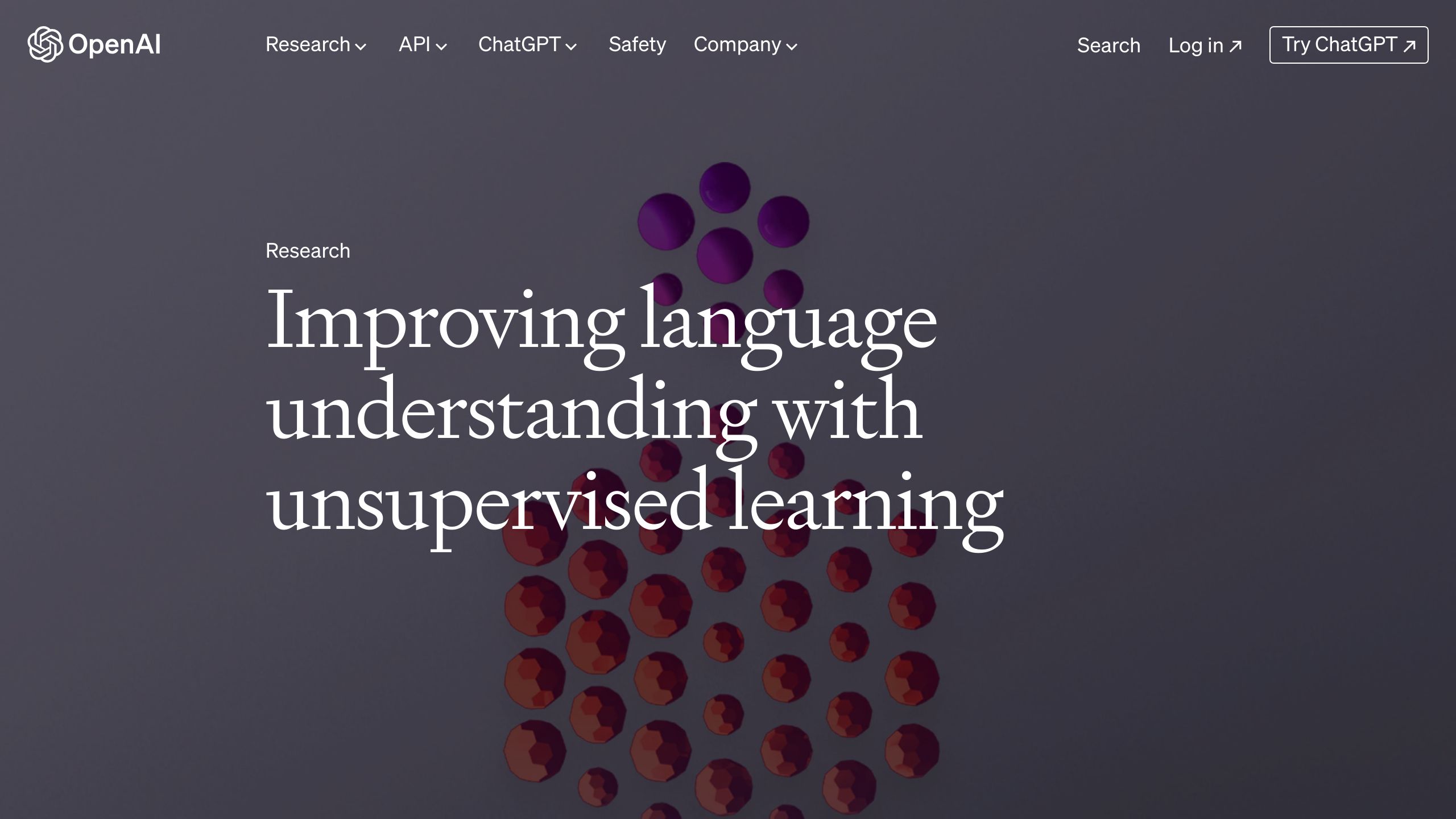Since its launch in 2022, ChatGPT by OpenAI has revolutionized the way we interact with AI, blending vast knowledge with a conversational style that mimics human interaction. Here’s a quick overview of its journey and capabilities:
- Origin: Developed by OpenAI, using the advanced GPT-3.5 model.
- Capabilities: Engages in human-like conversation, answers questions, summarizes texts, generates code, and more.
- Evolution: From GPT-1 in 2018 to the latest GPT-4 in 2023, each version significantly advanced in understanding and generating human language.
- Applications: Widely used in customer service, content creation, education, software development, and research.
- Impact and Ethics: Pushes the boundaries of Natural Language Processing (NLP), while raising important ethical considerations about bias, privacy, and misinformation.
- The Future: Focuses on expanding knowledge, improving reasoning, specializing in fields, multimodal understanding, and personalization.
ChatGPT represents a significant step towards creating AI that can think and interact like humans, promising even more personalized and intelligent applications in the future.
Understanding ChatGPT and Its Foundations
What is ChatGPT?
ChatGPT is a smart chatbot made by OpenAI. It’s like a robot you can talk to. It uses a big brain called GPT-3.5 to chat with people. This brain has learned a lot from reading the internet, so it can talk about many things, answer questions, and even say sorry when it gets something wrong.
ChatGPT can do stuff like:
- Have a chat about lots of topics
- Keep up with the conversation and remember what you said before
- Say when it doesn’t know something
- Write like a human for different needs
- Change languages
- Make a short version of a long story
What’s special about ChatGPT is how it can stick with the chat and change its answers based on what’s happening in the conversation. It’s also honest about what it can and can’t do.
The Technology Behind ChatGPT
ChatGPT works because of a smart design called transformer architecture. Think of it like a super reader that can look at a whole page and understand everything, no matter where the words are.
These transformers are the base for GPT-3, which ChatGPT uses. First, GPT-3 reads a lot from the internet without anyone telling it what to learn specifically. This helps it get really good at understanding language.
Then, it gets extra training to be great at chatting. This includes getting scores on its answers so it can get better.
Some other important bits that make ChatGPT smart include:
- Deep learning: It’s like a giant web of brain cells that help it understand language.
- Reinforcement learning: This is how ChatGPT learns from feedback to improve.
- Natural language processing: This is the tech that helps ChatGPT understand and use human language.
So, transformers, learning a lot on its own, and getting feedback make ChatGPT able to chat so well. But there’s still work to do to make it even better and fairer.
The Historical Progression of ChatGPT
From GPT-1 to GPT-4: A Timeline

ChatGPT started with GPT-1 in 2018, made by a group called OpenAI. GPT-1 was a big deal because it could understand and use language in a basic way, thanks to being trained on a bunch of books. But, it wasn’t great at getting the full picture or handling complicated stuff.
Then came GPT-2 in 2019. It was much bigger and smarter, trained on a lot more internet stuff. GPT-2 could write text that flowed well from start to finish, but there were worries it could be used in the wrong way. So, OpenAI didn’t let everyone use it right away.
2020 brought us GPT-3, a giant leap forward with its ability to do things like translate languages, answer questions, and even code. This version made more people notice and use these language models.
In 2022, GPT-3.5 came along, focusing on chatting. It was a step toward ChatGPT, understanding what users liked to make conversations feel more natural.
The latest, GPT-4 in 2023, is even more impressive. It can handle a lot more information, be more accurate, and follow what users want better.
As technology and data grow, ChatGPT gets smarter, opening up new possibilities.
OpenAI and the Genesis of ChatGPT
OpenAI started in 2015, aiming to make sure smart computer brains (AI) do good things for people. They work on making AI safe and came up with things like ChatGPT.
ChatGPT is part of their effort to create AI that can chat and think like a human. OpenAI wants to make sure AI is helpful and safe.
By sharing their work openly, OpenAI lets others contribute, keeping safety and good values in mind. This approach has helped ChatGPT grow in a responsible way.
Milestones in ChatGPT’s Evolution
Significant Updates and Enhancements
ChatGPT has gotten a lot better since it first came out, thanks to some big updates. Here are a few important ones:
- Fine-Tuning Capabilities (2019): This update made it possible for users to make ChatGPT better at specific tasks, like answering questions or translating languages.
- Expanded Training Data (2019, 2020): By learning from more information, ChatGPT got better at understanding language and figuring out what people mean.
- Reinforcement Learning from Human Feedback (2020): This helped ChatGPT learn how to give answers that are more helpful and sound more like a real person.
- Conversational Training Data (2022): By using real conversations, ChatGPT became friendlier and easier to talk to.
These updates made ChatGPT smarter, better at understanding the world, and more useful for real-life tasks.
Integration and Applications
ChatGPT is now used in lots of different areas:
- Customer Service: It can answer questions, give advice, and set up appointments.
- Content Creation: It helps write articles, emails, and essays that match what readers want.
- Education: It offers personalized help for students and helps teachers plan lessons.
- Software Development: It suggests ways to write code and helps fix problems.
- Research: It can summarize academic papers and help with studies.
As ChatGPT keeps getting better, it will be used in even more ways, helping businesses work smarter and making it easier for people to get things done./banner/inline/?id=sbb-itb-99f891a
The Technological and Societal Impact of ChatGPT
Influence on Natural Language Processing (NLP) Research
ChatGPT has really changed the game in how computers understand and use human language, making big waves in the science of NLP.
Here’s how ChatGPT has helped:
- Setting the bar high: It’s so good at understanding and creating text that other models have to work hard to keep up. This pushes everyone to make even better technology.
- Better at making stuff up: ChatGPT can write stories, translate languages, and summarize articles like a human, which has opened up new areas for scientists to explore.
- More interest in big language brains: Thanks to ChatGPT, there’s a lot more excitement about making even bigger and smarter language models.
- Learning from a little: The release of GPT-3 showed how a model can learn a lot from just a few examples, which is pretty cool.
- Learning from feedback: The way ChatGPT gets better by listening to what people say has made scientists think more about how to teach computers using feedback.
ChatGPT is one of the top tools out there for NLP, and it’s going to help make even more amazing things possible.
Ethical Considerations and Responsible AI Deployment
As ChatGPT gets used more, we need to think about how to use it in a good way:
Making it fair
- ChatGPT can sometimes be biased because of what it learned from. Researchers are working to make it less biased and more fair.
Stopping fake news and harmful stuff
- We need to make sure ChatGPT doesn’t spread lies or dangerous advice. Using filters and checks can help keep things safe.
Keeping your info safe
- ChatGPT needs to protect your private information by keeping it secret and safe.
Making it clear how it works
- Explaining how ChatGPT comes up with its answers can make it easier to trust and understand.
Not relying on it too much
- AI like ChatGPT can help us a lot, but it’s important to remember that humans should still be in charge.
By thinking about these issues and working on them, we can make sure ChatGPT helps people in the right way. It’s important to keep humans in the loop, guiding how AI is used.
The Future Trajectory of ChatGPT
Ongoing Improvements and Future Innovations
ChatGPT is going to keep getting better. Here’s what’s being worked on:
- Expanded knowledge base: ChatGPT learns from the data it’s been fed. By giving it more information on a wider range of topics and languages, it’ll be able to chat about more things.
- Improved reasoning: Making ChatGPT’s thinking sharper could help it give better answers. This might involve new learning methods or mixing in different AI techniques.
- Specialization: Tailoring ChatGPT for specific fields like medicine or law could make it more useful for experts.
- Multimodal understanding: Letting ChatGPT understand pictures, sounds, and other inputs could make conversations richer.
- User personalization: Allowing people to adjust how ChatGPT talks or what it prefers could make chats feel more natural.
With these updates, we can look forward to chats that feel more like talking to a human, customized to our liking, and smarter in understanding different kinds of inputs.
ChatGPT and the Path Towards General AI
ChatGPT is a big step towards creating AI that can think and understand like humans do. Here’s how it’s helping:
- It can keep up with long chats, remember what was said before, and stay consistent, which are key for smart AI.
- It learns new things quickly, showing it can adapt across different topics, much like how people learn.
- ChatGPT comes up with unique and interesting answers, showing it’s not just repeating what it’s learned but can think in new ways.
But, there are still big challenges:
- Sometimes, ChatGPT gets things wrong, lacks common sense, or doesn’t fully understand.
- It can be too sure of itself, even when it makes mistakes, and it doesn’t know its own limits without being told.
Working on these issues, and combining human help with AI, will be important for making AI that’s both helpful and safe.
While ChatGPT is really good at using words, there’s still a long way to go before AI can truly think like a human. But, the progress we’re seeing is promising.
Conclusion
ChatGPT has come a long way since it first started. From the very first version in 2018 to the latest GPT-4, there have been a lot of improvements that make it much better at understanding and talking like a human.
Here are some important steps that helped it grow:
- It got better at adjusting to different jobs and topics.
- It learned from more information, so it knows more about the world.
- It got better at chatting by learning from what people tell it.
- It uses real conversations to make chatting smoother.
Now, ChatGPT helps in many areas like helping customers, writing stuff, coding, and researching. It’s also making people think about how to use AI in a good way, focusing on being clear, fair, and careful.
Even though it’s not perfect, ChatGPT shows how far we’ve come with AI that can chat. We’re working on making it think better, understand more types of information, and talk about more topics. This means we’re getting closer to AI that can chat with us just like another person, making it easier for everyone to use.














